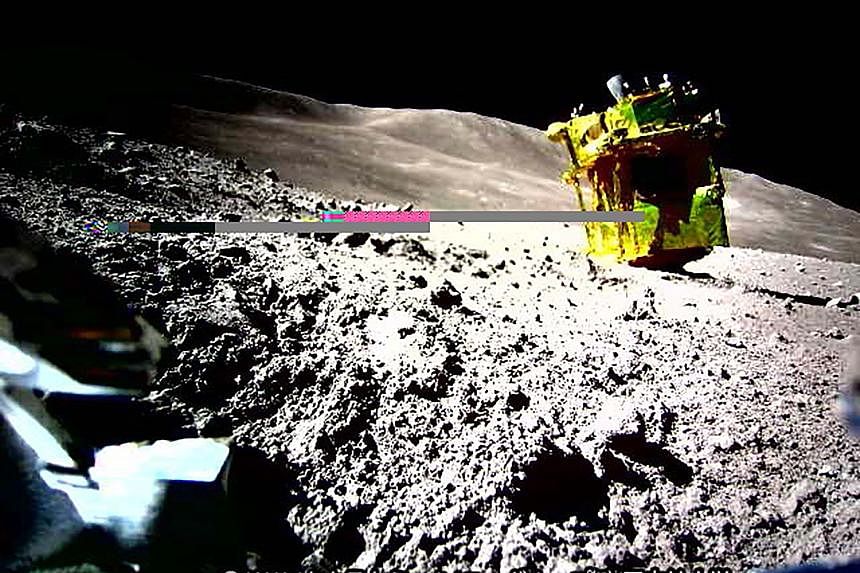TOKYO – Japan’s Moon lander is out of action again after a brief awakening, but will resume its mission if it survives the two-week lunar night, the space agency said on Feb 1.
The unmanned Smart Lander for Investigating Moon (Slim) touched down in January at a wonky angle that left its solar panels facing the wrong way.
As the Sun’s angle shifted, it came back to life for two days this week and carried out scientific observations of a crater with its high-spec camera.
“After completing the operation from Jan 30 (to) Jan 31, #Slim entered a two-week dormancy period during the long lunar night,” Japan Aerospace Exploration Agency (Jaxa) said on X, formerly Twitter.
“Although Slim was not designed for the harsh lunar nights, we plan to try to operate again from mid-February, when the Sun will shine again on Slim’s solar cells.”
Jaxa said Slim was able to “successfully complete observations... as originally planned” with its multi-band spectroscopic camera and could study more target areas than initially expected.
The space agency also on Feb 1 posted a black-and-white photo of the rocky surface taken by the spacecraft.
It followed other grainy images sent back from the mission to investigate an exposed area of the Moon’s mantle, the inner layer usually deep beneath its crust.
Slim, dubbed the “Moon Sniper” for its precision landing technology, touched down within its target landing zone on Jan 20.
The feat was a boon for Japan’s space programme after a string of recent failures, making the nation only the fifth to achieve a soft landing on the Moon, after the United States, the Soviet Union, China and India.
But during its descent, the craft suffered engine problems and ended up on its side, meaning the solar panels were facing west instead of up.
Russia, China and other countries from South Korea to the United Arab Emirates are also trying their luck to reach the Moon.
US firm Astrobotic’s Peregrine lunar lander began leaking fuel after take-off in January, dooming its mission. It likely burned up in the Earth’s atmosphere on its return.
The National Aeronautics and Space Administration has also postponed plans for crewed lunar missions under its Artemis programme. AFP

